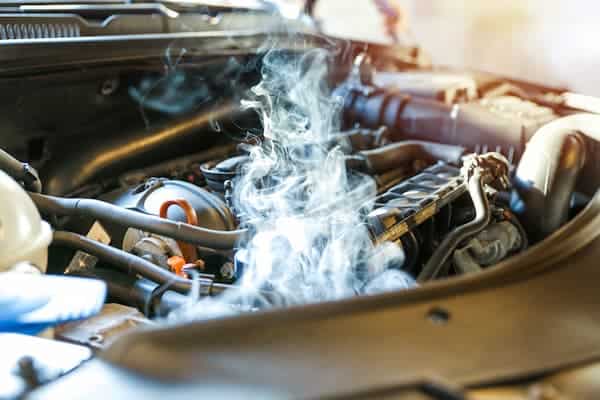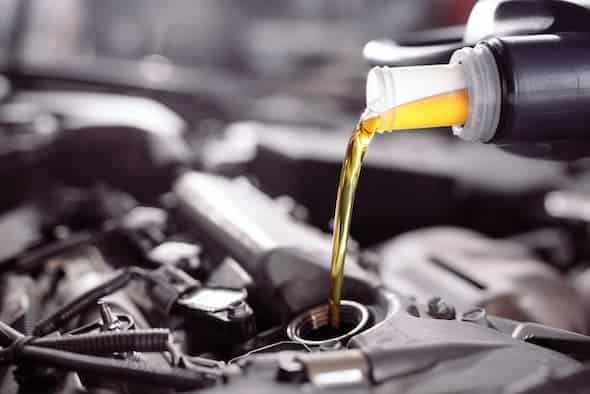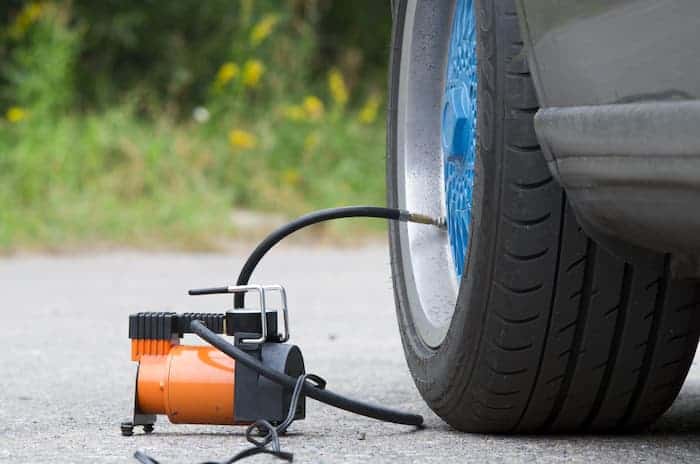Every car owner understands the importance of oil in maintaining the health and functionality of their vehicle’s engine. Oil serves as a lubricant, reducing friction and heat between moving parts while also carrying away contaminants. However, what happens if your car runs out of oil? In this article, we will explore the potential consequences of driving without oil, how it affects your engine, and what steps you can take to mitigate the damage.
Table of Contents
Toggle- How Long Can an Engine Run Without Oil Before Damage?
- Can an Engine Be Fixed After Running Out of Oil?
- How Does a Car Act When It’s Out of Oil?
- how often should you change your synthetic oil
- Can I Just Add More Oil to My Car?
- How often should I check my car’s oil level and perform a car fluid check?
- What Does a Car Sound Like with No Oil?
- how long does an oil change take
- Understanding the Oil Change Light in a Car
- Conclusion
How Long Can an Engine Run Without Oil Before Damage?
Running a car without oil can have catastrophic consequences for the engine. Oil plays a vital role in lubricating and cooling various components, such as pistons, valves, and camshafts. Without oil, these parts can grind against each other, leading to excessive friction, heat buildup, and ultimately, severe damage.
The exact duration an engine can run without oil before damage occurs depends on several factors. The quality and type of oil previously used, the engine’s design, the driving conditions, and the engine’s overall condition all play a role. Generally, experts suggest that an engine can run for about 2-30 minutes without oil before significant damage is likely to occur.
Can an Engine Be Fixed After Running Out of Oil?
The severity of the damage caused by running out of oil determines whether an engine can be repaired or not. If caught early, when the engine has only experienced minimal damage, repairs may be possible. However, if the engine has been driven for an extended period without oil, the damage can be extensive, leading to a complete engine failure.
Repairing an engine that has run out of oil often requires the expertise of a professional mechanic. They will assess the extent of the damage and recommend appropriate repairs, which can range from replacing damaged parts to a complete engine overhaul. In severe cases, the cost of repairs may be higher than the value of the car itself, making it uneconomical to fix.
How Does a Car Act When It’s Out of Oil?
When a car runs out of oil or has critically low oil levels, it exhibits several noticeable symptoms. These warning signs indicate that the engine is not receiving proper lubrication, and immediate action is necessary to prevent further damage. Some common symptoms of low oil include:
- Oil pressure warning light: The oil pressure warning light on the dashboard flashes or remains illuminated, indicating low oil pressure. This is a clear indication that the engine lacks sufficient lubrication, and immediate attention is required.
- Strange engine noises: A car without enough oil may produce unusual engine noises. You may hear knocking, tapping, or grinding sounds, which are caused by metal components rubbing against each other due to the lack of lubrication. These noises should not be ignored, as they signify potential damage to the engine.
- Decreased performance: When a car is running low on oil, its performance may be negatively affected. You may experience reduced power, sluggish acceleration, or even stalling. The engine may struggle to perform optimally, resulting in a noticeable decrease in overall vehicle performance.
- Overheating: Oil not only lubricates the engine but also helps in dissipating heat. Without proper lubrication, the engine components can generate excessive heat, leading to overheating issues. If you notice your car’s temperature gauge rising rapidly or the engine overheating warning light illuminating, it could be due to low oil levels.
how often should you change your synthetic oil
The frequency of changing synthetic oil in your car depends on several factors, including the vehicle manufacturer’s recommendations and your driving habits. Synthetic oil is known for its superior performance and longer-lasting properties compared to conventional oils.
In general, most vehicle manufacturers suggest changing synthetic oil every 3,000 to 10,000 miles. miles or every 6 to 12 months, whichever comes first. However, it’s important to consult your car’s owner manual for the specific oil change interval recommended by the manufacturer for your particular make and model.
It’s worth noting that certain driving conditions may warrant more frequent oil changes. If you often drive in severe conditions, such as extreme temperatures, dusty environments, or stop-and-go traffic, you may need to change the synthetic oil more frequently. These challenging conditions can cause the oil to degrade more quickly, compromising its effectiveness in protecting the engine.
Can I Just Add More Oil to My Car?

If you realize that your car is low on oil or has run out of oil, it is crucial to address the issue promptly. Adding more oil is a temporary solution and should not be considered a permanent fix. While adding oil may provide some lubrication and prevent immediate damage, it is essential to understand that the underlying cause of low oil levels needs to be addressed.
Regular oil changes are essential for maintaining the health of your car’s engine. Oil breaks down over time and loses its lubricating properties. Therefore, adding oil without changing the old oil can lead to contamination and reduced effectiveness. It is best to follow the manufacturer’s guidelines for oil change intervals and use the recommended oil grade for your specific vehicle.
When adding oil, it is essential to do so correctly. Locate the oil dipstick, remove it, and wipe it clean. Then, reinsert it fully and remove it again to check the oil level. If the level is low, pour oil into the designated oil filler cap, usually located on the top of the engine. Be cautious not to overfill, as it can lead to other issues. It is advisable to add oil in small increments and recheck the level to ensure it is within the recommended range.
How often should I check my car’s oil level and perform a car fluid check?

It is recommended to check your car’s oil level regularly, at least once a month or before long trips. Performing a car fluid check, including checking the oil level, coolant level, brake fluid level, and other essential fluids, helps ensure your vehicle’s proper functioning and safety. Regularly monitoring the oil level and conducting a comprehensive car fluid check can help you detect any potential issues early on.
What Does a Car Sound Like with No Oil?
If your car is running without oil, the engine may produce distinct sounds that indicate a lack of lubrication. One common sound is engine knocking. It is often described as a repetitive tapping or knocking noise, which occurs when the metal components of the engine collide due to inadequate lubrication. This sound should not be ignored, as it signifies serious engine damage and the need for immediate attention.
Additionally, running a car without oil increases friction between the moving parts. This heightened friction generates more heat, resulting in further damage to the engine. If you hear a louder, harsher sound than usual coming from the engine, it is an indication that the lack of oil is causing increased friction and potential long-term damage.
how long does an oil change take
The duration of an oil change can vary depending on several factors. On average, an oil change takes approximately 15 to 45 minutes while a DIY oil change takes 45 minutes to 2 hours. However, this timeframe can be influenced by factors such as the vehicle’s make and model, the type of oil being used, the technician’s experience, and the service location’s efficiency.
During an oil change, the technician will drain the old oil, replace the oil filter, and refill the engine with fresh oil. Additionally, they may inspect other components, such as the air filter and fluid levels, as part of the service. While the actual oil change itself may only take a short time, additional checks and inspections can extend the overall duration of the service.
It’s worth noting that certain factors can affect the time it takes to complete an oil change. If the vehicle has specific maintenance requirements or if additional services are requested, such as a tire rotation or fluid top-up, the overall time may be longer. It’s always a good idea to check with the service provider beforehand to get a more accurate estimate of the time required for your specific vehicle and requested services.
Remember, maintaining regular oil change intervals as recommended by the vehicle manufacturer is essential for the optimal performance and longevity of your engine.
Understanding the Oil Change Light in a Car

Most modern cars are equipped with an oil change light or oil change indicator on the dashboard. This light serves as a reminder to change the oil at regular intervals. Ignoring this warning light can have detrimental effects on your engine’s health.
The oil change light is designed to monitor the condition of the oil and the engine’s operating conditions. It takes into account factors such as mileage, driving conditions, and engine temperature to determine when an oil change is needed. When the predetermined threshold is reached, the light illuminates, indicating that it is time to schedule an oil change.
Timely oil changes are crucial for maintaining the longevity and performance of your engine. Regularly changing the oil ensures that the engine is properly lubricated and protected from wear and tear. Neglecting to change the oil can result in oil degradation, reduced lubrication, and increased friction, which can lead to engine damage over time.
It is important to follow the manufacturer’s recommendations for oil change intervals specific to your vehicle. These intervals may vary depending on factors such as the type of oil used, driving conditions, and the age of the engine. Adhering to these guidelines will help maintain the engine’s optimal performance and prevent potential issues caused by inadequate lubrication.
Conclusion
Running a car without oil can have severe consequences for the engine’s health and performance. The engine relies on oil for lubrication, cooling, and protection against friction and heat buildup. If your car runs out of oil or has critically low oil levels, it is crucial to address the issue promptly to prevent further damage.
Symptoms of low oil, such as the oil pressure warning light, strange engine noises, decreased performance, and overheating, should not be ignored. Adding more oil temporarily may provide some relief, but it is essential to address the root cause of low oil levels and follow proper maintenance practices, including regular oil changes.
By staying proactive and attentive to your car’s oil levels and maintenance needs, you can ensure the longevity and optimal performance of your engine, ultimately saving you from costly repairs and potential engine failure.




